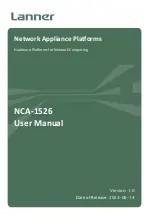
13-6
Catalyst 4500 Series Switch, Cisco IOS Software Configuration Guide - Cisco IOS XE 3.9.xE and IOS 15.2(5)Ex
Chapter 13 Configuring Cisco NSF with SSO Supervisor Engine Redundancy
About NSF with SSO Supervisor Engine Redundancy
If the BGP session is lost during the supervisor engine switchover, the NSF-aware BGP peer marks all
the routes associated with the NSF-capable router as stale; however, it continues to use these routes to
make forwarding decisions for a set period of time. This functionality prevents packets from being lost
while the newly active supervisor engine is waiting for convergence of the routing information with the
BGP peers.
After a supervisor engine switchover occurs, the NSF-capable router reestablishes the session with the
BGP peer. In establishing the new session, it sends a new graceful restart message that identifies the
NSF-capable router as having restarted.
At this point, the routing information is exchanged between the two BGP peers. After this exchange is
complete, the NSF-capable device uses the routing information to update the RIB and the FIB with the
new forwarding information. The NSF-aware device uses the network information to remove stale routes
from its BGP table; the BGP protocol then is fully converged.
If a BGP peer does not support the graceful restart capability, it ignores the graceful restart capability in
an OPEN message but establishes a BGP session with the NSF-capable device. This function allows
interoperability with non-NSF-aware BGP peers (and without NSF functionality), but the BGP session
with non-NSF-aware BGP peers is not capable of a graceful restart.
Note
BGP support in NSF requires that neighbor networking devices be NSF-aware; that is, the devices must
have the graceful restart capability and advertise that capability in their OPEN message during session
establishment. If an NSF-capable router discovers that a particular BGP neighbor does not have graceful
restart capability, it does not establish an NSF-capable session with that neighbor. All other neighbors
that have graceful restart capability continue to have NSF-capable sessions with this NSF-capable
networking device.
OSPF Operation
Note
OSPF Version2 fast hellos generate false alarms. We recommend that you use Bidirectional Forwarding
Detection (BFD) instead.
When an OSPF NSF-capable router performs a supervisor engine switchover, it must perform the
following tasks in order to resynchronize its link state database with its OSPF neighbors:
•
Relearn the available OSPF neighbors on the network without causing a reset of the neighbor
relationship
•
Reacquire the contents of the link state database for the network
As quickly as possible after a supervisor engine switchover, the NSF-capable router sends an OSPF NSF
signal to neighboring NSF-aware devices. Neighbor networking devices recognize this signal as an
indicator that the neighbor relationship with this router should not be reset. As the NSF-capable router
receives signals from other routers on the network, it can begin to rebuild its neighbor list.
After neighbor relationships are reestablished, the NSF-capable router begins to resynchronize its
database with all of its NSF-aware neighbors. At this point, the routing information is exchanged
between the OSPF neighbors. Once this exchange is complete, the NSF-capable device uses the routing
information to remove stale routes, update the RIB, and update the FIB with the new forwarding
information. The OSPF protocols are then fully converged.
Summary of Contents for Catalyst 4500 Series
Page 2: ......
Page 4: ......
Page 2086: ...Index IN 46 Software Configuration Guide Release IOS XE 3 9 0E and IOS 15 2 5 E ...
















































